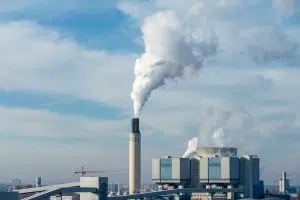INDIANAPOLIS — Draft federal regulations for toxic coal byproducts could result in covering nearly 50 exempted dumps spread across 14 locations in Indiana.
The Environmental Protection Agency’s rule, released last week, would extend monitoring, closure, and cleanup provisions to certain landfills, ponds, and other sites for the first time. “Coal ash,” the catch-all term for particulate matter produced by burning coal, can contain dangerous carcinogens like arsenic, cadmium, and mercury.
“This is a really big deal,” said Lisa Evans, senior counsel for nonprofit environmental litigator Earthjustice, in a news release. The proposal arises out of a settlement of a lawsuit involving the organization, several Hoosier plaintiffs, and others.
“The Biden administration is standing up for people near a lot of hazardous coal waste sites around the country,” Evans added. “For far too long, a large portion of toxic coal ash around the U.S. was left leaching into drinking water supplies without any requirement for it to be cleaned up.”
Although utilities for decades have dumped coal in unlined landfills and ponds throughout the country, no national standards for coal ash existed until 2015.
That year, an initial EPA rule went into force. But it excluded landfills that stopped taking in waste before the effective date, as well as ponds at power plants that stopped generating energy before the effective date.
An Earthjustice analysis found that the regulations left out 566 landfills and ponds and 242 plants in 40 states. In Indiana alone, that meant 25 landfills and 23 ponds at 14 sites.
Earthjustice represented a coalition of groups that sued the EPA that year, culminating in a 2018 D.C. appeals court decision that nullified the exemptions. And the organization filed suit again in 2022, on behalf of several Indiana organizations and others, seeking to force the promulgation of new requirements tailored to the exclusions.
Last week, the EPA released the draft regulations. Those in charge of the 48 dumps left out of the original rule could face new requirements if it’s finalized — although the EPA said it would phase compliance deadlines in.
See the full story here.





